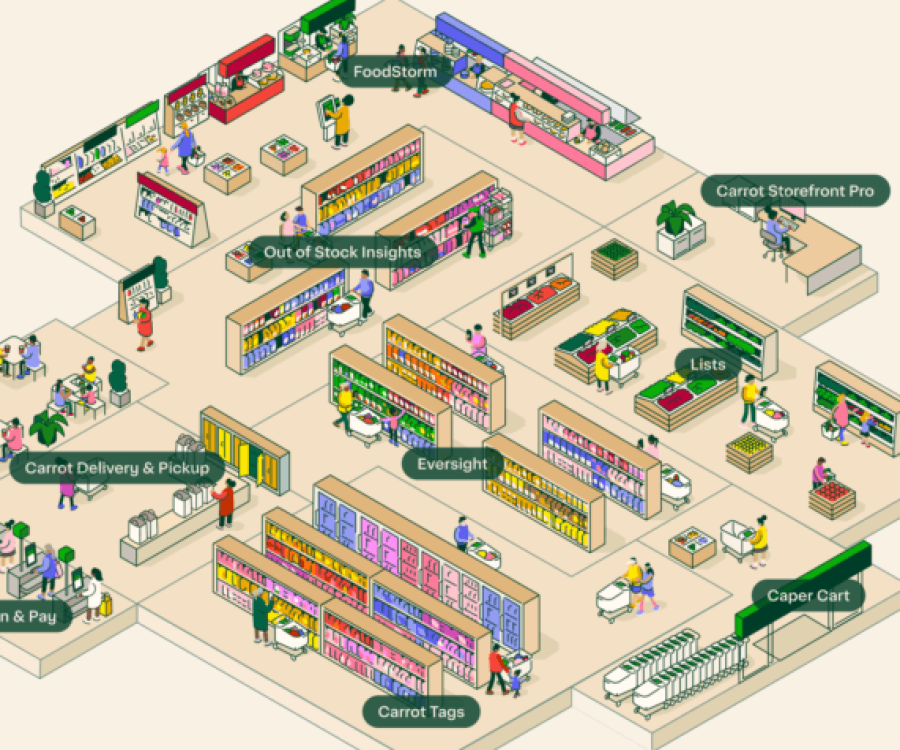
Symphony RetailAI, a global provider of integrated AI-powered marketing, merchandising and supply chain solutions for FMCG retailers and manufacturers, announced research showing that omnichannel grocery shoppers shop more frequently and spend up to 20% more compared to in-store-only shoppers. The findings come from shopper data collected across Symphony RetailAI’s customer base of leading grocery retailers during Q1 2021, across 421 million baskets.
While Symphony RetailAI’s research indicated that half of shoppers abandoned the channel after one online purchase, those who remained engaged became more loyal. The data suggests that retaining online and omnichannel shoppers, and encouraging in-store shoppers to make online purchases, will yield long-term loyalty for retailers in the new grocery landscape.
“Because most grocery retailers operate with narrow margins, it’s important for them to find ways to gain more share of wallet while building customer loyalty,” said Chris Koziol, CEO, Symphony RetailAI. “Providing customers with an online channel to shop how and when they want is a key differentiator, as we see with the increasing loyalty of omnichannel shoppers observed in our data. Therefore, the online grocery trend should be seen as a win-win omnichannel scenario, not a matter of ‘bricks versus clicks.’ Our recommendation to retailers based on these insights is to focus on the complete customer lifecycle and buying journey with an emphasis on driving repeat purchases to build long-term engagement.”
Symphony RetailAI analyzed shopper data from 421 million baskets in the U.S. and Europe. Key findings from Symphony RetailAI’s analysis include the following:
- Customers are making more repeat purchases. Of customers making an online purchase in Q1 2021, Symphony RetailAI found that seven out of 10 returned and bought again within the same quarter. This is up from five out of 10 in Q1 2020.
- Repeat online visits lead to long-term customer retention. Symphony RetailAI’s data shows that if an online customer returns to the channel seven times in the first three months, they are three times more likely to become a long-term engaged customer. While only one-third of customers are considered long-term engaged, they represent more than half of all online sales, making them four times more valuable.
- There’s potential for online to create an ‘Amazon effect’ with untapped category ranges. Symphony RetailAI found that only 15% of retailers’ in-store non-food inventory was also purchased online. As consumers seek convenience in a post-pandemic world, grocers can broaden their online offerings, especially in non-food categories. Promoting a “one-stop shop” experience from low-penetration in-store categories could avoid a missed opportunity for online sales. Doing so could yield up to 1.8% sales growth.
- Online grocery sales doubled year over year. In Q1 2021, ecommerce sales represented 8% of total revenue sales. While this figure may seem small, it has doubled from Q1 2020. Furthermore, online sales contributed 50% of total revenue growth during Q1 2021, up 20% from before the pandemic.
“A retailer with an omnichannel strategy puts the customer – not corporate processes – at the center of its strategy,” said Koziol. “Our findings emphasize the importance of real-time consumer behavior insights and loyalty segmentation that power an engaging ecommerce channel, allowing them to more quickly react to consumer demands. To make omnichannel profitable, grocers need to understand their customers, provide them with the goods and services they want through any retail channel they desire, fulfill their purchases quickly and efficiently, and offer outstanding customer service. Now more than ever, it’s crucial for retailers to leverage AI and machine learning to quickly identify and execute customer-centric opportunities, with agility and precision that engage and encourage loyalty.”








